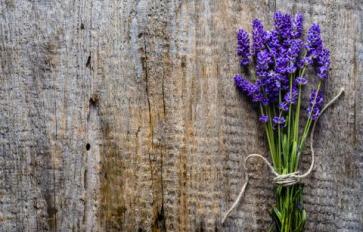
Here are seven steps to an Ayurvedic bath; not just to cleanse the body but also to rejuvenate the mind and soul…
Call it a bath, a shower or just a wash – bathing is not just a cleansing of the body. If done right, bathing can actually be a therapeutic, rejuvenating ritual for the mind, body and soul; and you don’t need to go to a spa or buy expensive products for it. Just a few steps and a few changes to your bathroom and routine can make your bath refreshing like never before.
Step 1: The Odors
As such, bathrooms do get dirty and germ-infested, and so they smell stale. Also, you cannot cleanse your body in a place that’s unclean itself. So the first thing to do is to ensure that your bathroom is clean and free of any offensive sights, odors and tactile disturbances. You may want to light a scented candle or an aromatherapy infuser with calming scents like lavender, lemon, lemongrass or rose. Remember to choose a scent that you like, not just the ones mentioned here. Keep a few indoor plants in mini planters in your bathroom – the sight of verdant greenery is calming and uplifting.
Step 2: The Lights
Ever wondered why a candlelight is relaxing, and a florescent lamp is not? A candle or an oil lamp is natural light – it is fire, and fire in Ayurveda is a purifying force. Lighting an herbal candle or incense is invigorating because the burning essence of herbs will purify the air around you and invoke a feeling of mental peace and well-being. Adjust the lights according to your liking, dim or brighten as per whatever relaxes you at that moment – and change the routine as often as you like. Your state of mind is not the same every day, so you will have to use different ways to calm yourself.
Step 3: The Water
A bath is meant to relax as much as it’s supposed to clean. And dousing yourself with water that’s too hot, too cold and unclean isn’t going to relax you – it can merely put you in an irritable state. So get the water temperature right and make sure it’s clean and pleasing to smell. If having a bath, you may want to add in some bath salts at this point to make the water as soothing to smell and feel as possible. For showers, it’s the soap or wash that will add the scent.
Step 4: The Sounds
None of us really associate bathing with sounds – but the sound of water cascading over your body and down to the floor has a soothing rhythm of its own. Try and keep silence during your bath – bathing can also be a time of contemplation and meditation. If your bathroom is not particularly peaceful, you may want to bring in a small music player (make sure it’s waterproof or away from the water for safety purposes) and play music that calms you – instrumental, mantra chants, nature sounds and such. A good choice here would be a mixed collection of morning mantras, out of which the Snana Mantra (bath chant) is particularly relevant. ॥
Translated from Sanskrit, the mantra says: – O holy rivers Ganges and Yamuna, and also Godavari, Saraswati;
Narmada, Sindhu and Kaveri; please be present in this water near me and make it holy!
In effect this mantra is invoking the seven river goddesses of India – the water of each is said to have different mystical and healing properties – to come and be part of the water you are bathing in and make it clean, holy and deeply purifying.
Step 5: The Sensations
Bathing is a very tactile sensation, and a time to be aware of your body, inside out. Your soap, body wash, body scrub and loofah are not instruments of torture – never should they feel rough or leave your skin feeling dry. Remember to make your choice of soap as per smell and feel and not just look. A natural, organic, herbal or an Ayurvedic soap is a good bet, but be sure to choose one from a reputed brand. Try to look at the ingredient list – don’t choose anything that looks like a chemical equation gone bad. The higher the fatty matter of the soap, the better it is for your skin, so use a soap that’s preferably Grade 1 (76% total fatty matter). This is where the organic bit comes in – most soaps use animal fat. If you have chosen to live the organic or the vegan way, you’ll have to choose soaps that are organic and vegan accordingly.
Step 6: The Ritual
Bathing is not so much a routine as it is a ritual. There are many Ayurvedic steps to a bath – including the application of oil in a certain manner. That said, we live in a rather rushed world today – so a trick would be to use bath oil infused soap instead. Don’t hurry with the soap all over your body and neither try to slough off your skin with a loofah. Be gentle, calm and purposeful in soaping your body. Touch your skin, feel your muscles and realize the strength that is there is in your body. The human body is indeed a wonder of nature – accept your fallacies, rejoice in your uniqueness. Let the water cleanse the impurities off your body and the negativity from your mind and heart. And remember to be gentle: your skin has to last you your lifetime. The same goes with shampooing your scalp and conditioning your hair – be gentle, unhurried and peaceful.
Step 7: The Finale
To every ritual, there is a finale. And the ending of a bath is not supposed to be a hurried towel rub and a rushed wearing of clothes. Most of us tend to work ourselves up into a state of near panic – getting late, will miss that meeting, forgot this, had to do that… Try to keep work out of your bathroom – this is a time to reconnect with yourself.
Pat your skin dry lovingly, and then moisturize with something that smells and feels invigorating to you. Look at yourself in the bathroom mirror and smile – believe in your beauty, in your uniqueness, in your inner strength. Dress yourself, not in a tripping hurry, but calmly and gently.
And when you open that door to step out – smile at the sun, at the sky, at the ground. Applaud and thank nature for having created you. Such is the wonder of a relaxed, Ayurvedic snan (bath).
Sources:
http://www.greenmesg.org/mantras_slokas/others-gange_ca_yamune_caiva.php
http://www.artofliving.org/in-en/shower-yourself








